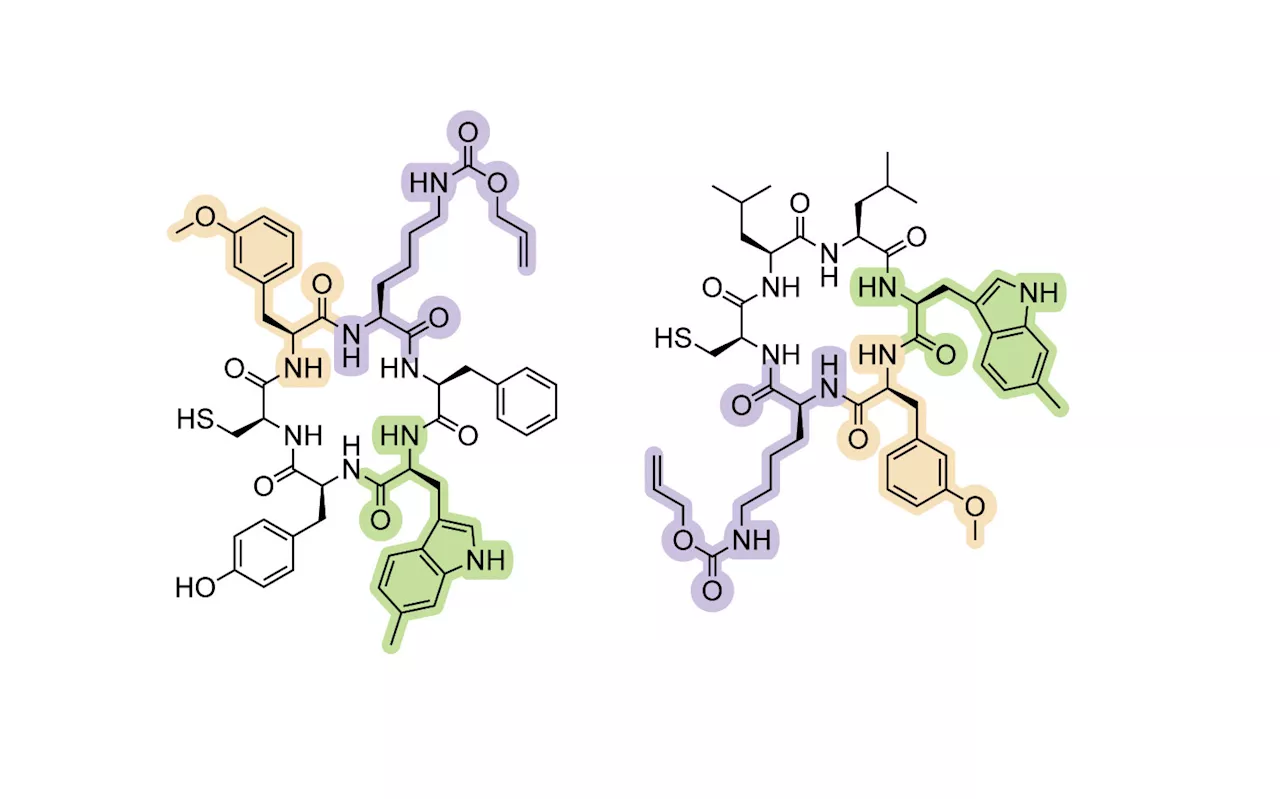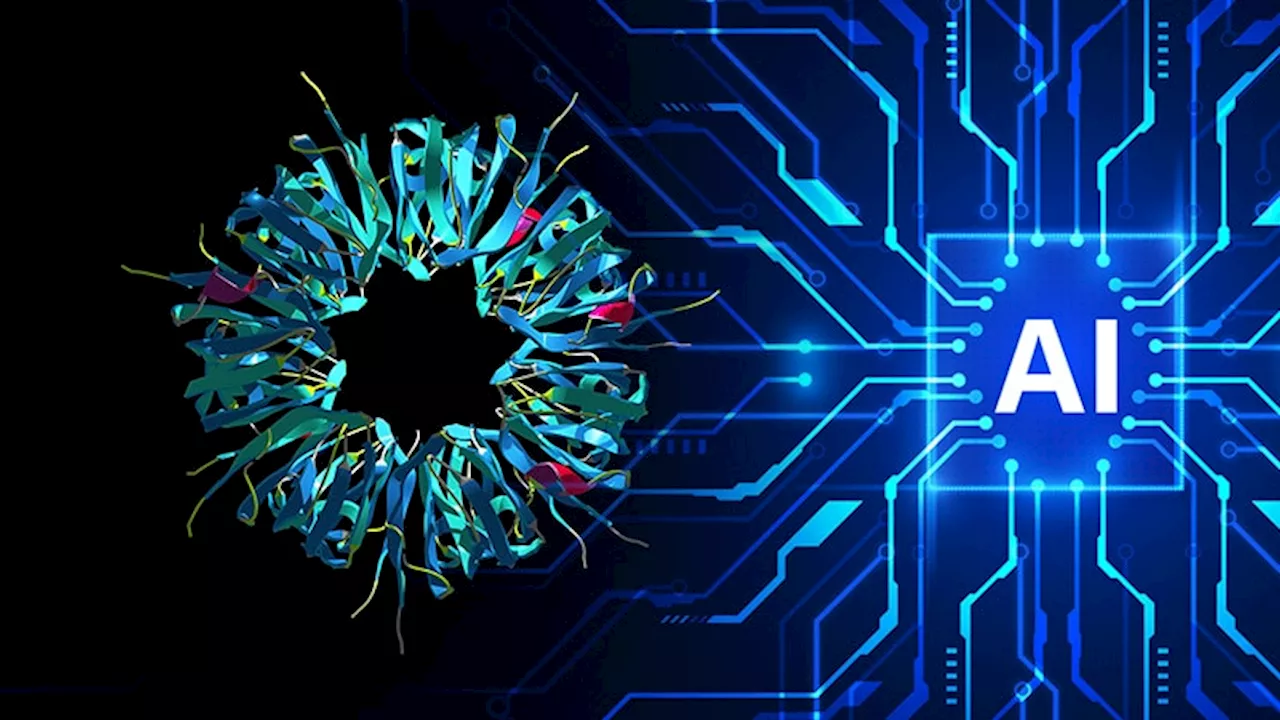It's a dogma taught in every introductory biology class: Proteins are composed of combinations of 20 different amino acids, arranged into diverse sequences like words.
The novel method uses sets of four RNA nucleotides--rather than the natural three--to encode new, synthetic building blocks into proteinsIt's a dogma taught in every introductory biology class: Proteins are composed of combinations of 20 different amino acids, arranged into diverse sequences like words.
"Our goal is to develop proteins with tailored functions for applications in fields spanning bioengineering to drug discovery," says senior author Ahmed Badran, PhD, an assistant professor of chemistry at Scripps Research."Being able to incorporate non-canonical amino acids into proteins with this new method gets us closer to that goal."
"Creating free codons by whole genome recoding can be a powerful strategy, but it can also be a challenging undertaking since it requires considerable resources to build new genomes," says Badran."For the organism itself, it can be difficult to predict how such codon changes influence genome stability and host protein production."
Badran's group then tested whether they could alter the sequence of a single gene so that it had a new four-nucleotide codon that would be correctly used by the cell. The method worked: When the researchers surrounded a target site with three-letter, frequently used codons and maintained sufficient levels of the four-nucleotide tRNA, the cell incorporated any new amino acid that was attached to the corresponding four-letter tRNA.
"Our results suggest that one can now easily and effectively incorporate non-canonical amino acids at diverse sites in a wide array of proteins," says Badran."We're excited about these possibilities for our ongoing work and to provide this capability to the broader community."
Human Biology Genes Personalized Medicine Cell Biology Genetics Molecular Biology Biology
France Dernières Nouvelles, France Actualités
Similar News:Vous pouvez également lire des articles d'actualité similaires à celui-ci que nous avons collectés auprès d'autres sources d'information.
 Scientists expand the genetic alphabet to create new proteinsIt's a dogma taught in every introductory biology class: Proteins are composed of combinations of 20 different amino acids, arranged into diverse sequences like words.
Scientists expand the genetic alphabet to create new proteinsIt's a dogma taught in every introductory biology class: Proteins are composed of combinations of 20 different amino acids, arranged into diverse sequences like words.
Lire la suite »
 How proteins bind to closed regions of the genome to facilitate cell differentiation and developmentA new experimental method allows researchers to dissect how certain proteins, called pioneer factors, can bind to selective regions of the genome that are inaccessible to other DNA binding proteins.
How proteins bind to closed regions of the genome to facilitate cell differentiation and developmentA new experimental method allows researchers to dissect how certain proteins, called pioneer factors, can bind to selective regions of the genome that are inaccessible to other DNA binding proteins.
Lire la suite »
 AI's Drug Revolution, Part 3: Making Proteins From ScratchGenerative AI can design never-before-seen proteins quickly and at scale, streamlining the drug design process like never before.
AI's Drug Revolution, Part 3: Making Proteins From ScratchGenerative AI can design never-before-seen proteins quickly and at scale, streamlining the drug design process like never before.
Lire la suite »
 Q&A: How single-cell and spatial proteomics reveal proteins' nuanced roles in health and diseaseWhen Steve Carr, senior director of the Proteomics Platform at the Broad Institute of MIT and Harvard, began working in proteomics, the field was able to detect only the most abundant proteins in a given sample.
Q&A: How single-cell and spatial proteomics reveal proteins' nuanced roles in health and diseaseWhen Steve Carr, senior director of the Proteomics Platform at the Broad Institute of MIT and Harvard, began working in proteomics, the field was able to detect only the most abundant proteins in a given sample.
Lire la suite »
 AI meets biophysics: New approach identifies critical interaction points in cancer-related proteinsResearchers at Auburn University, in collaboration with scientists from the University of Basel and ETH Zurich, have made an advance in the fight against cancer. The team, led by Dr.
AI meets biophysics: New approach identifies critical interaction points in cancer-related proteinsResearchers at Auburn University, in collaboration with scientists from the University of Basel and ETH Zurich, have made an advance in the fight against cancer. The team, led by Dr.
Lire la suite »
 A Common Sleeping Pill May Reduce Buildup of Alzheimer's Proteins, Study FindsThe Best in Science News and Amazing Breakthroughs
A Common Sleeping Pill May Reduce Buildup of Alzheimer's Proteins, Study FindsThe Best in Science News and Amazing Breakthroughs
Lire la suite »
